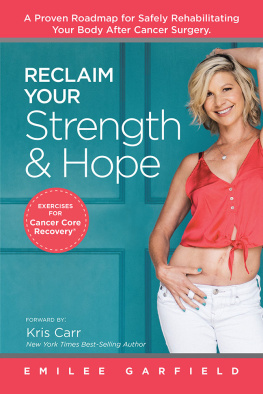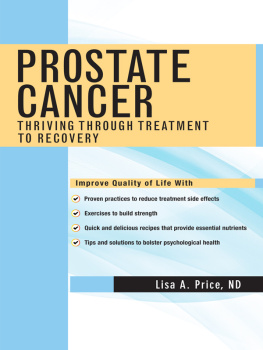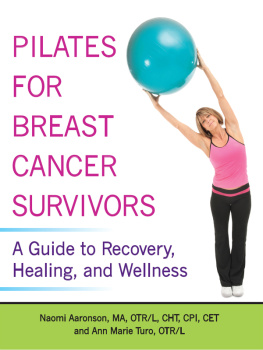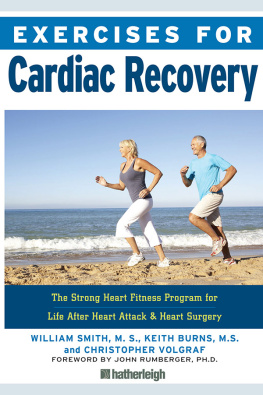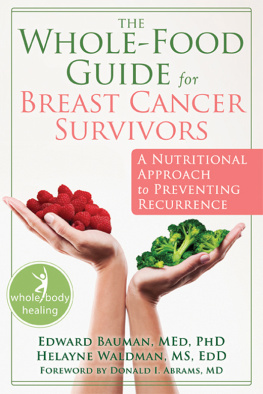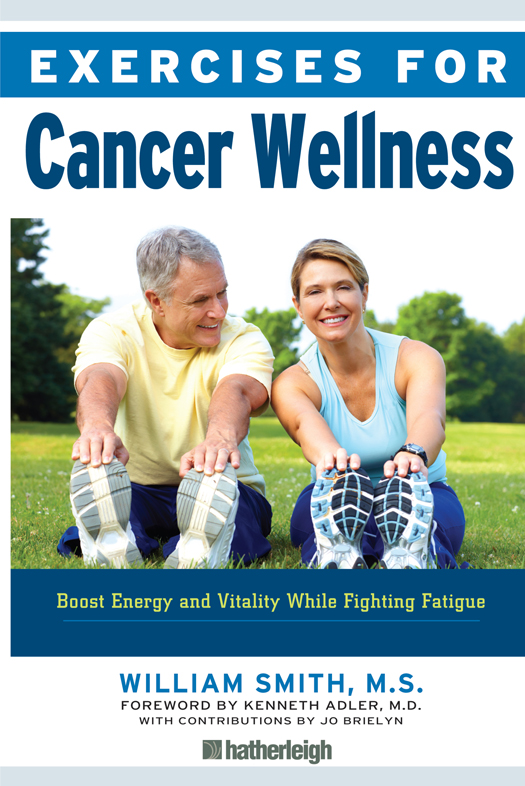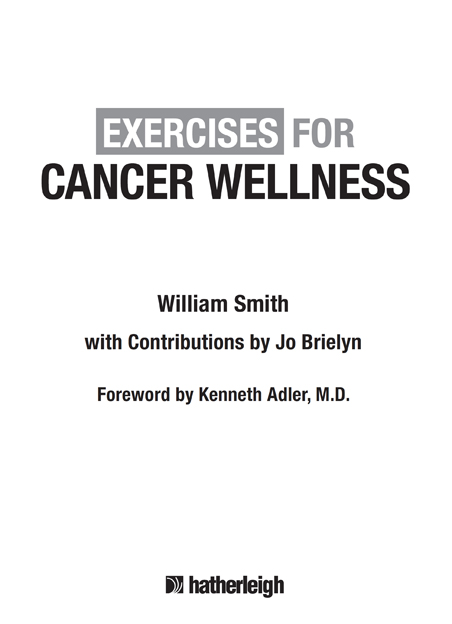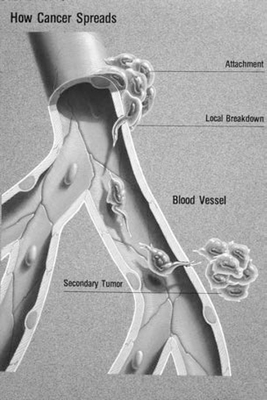
Hatherleigh Press is committed to preserving and protecting the natural resources of the earth. Environmentally responsible and sustainable practices are embraced within the companys mission statement.
Exercises for Cancer Wellness
Text copyright 2015 William Smith
Library of Congress Cataloging-in-Publication Data is available.
ISBN: 978-1-57826-571-8
All rights reserved. No part of this book may be reproduced, stored in a retrieval system, or transmitted, in any form or by any means, electronic or otherwise, without written permission from the publisher.
Cover Design by Heather Daugherty
Interior Design by Nick Macagnone
Photography by Catarina Astrom
Disclaimer
Consult your physician before beginning any exercise program. The author and publisher of this book and workout disclaim any liability, personal or professional, resulting from the misapplication of any of the following procedures described in this publication.
Ebook ISBN: 978-1-57826-572-5
v3.1
Contents
FOREWORD
by Kenneth Adler, M.D.
When I first started caring for people with cancer 35 years ago, I watched as my patients suffered from side effects of surgery, radiation, and chemotherapy treatments that were often as devastating as the disease itself. Treatments led to severe deconditioning. Drugs caused muscle weakness, severe fatigue, neuropathy, and weight gain; a patients basic metabolism could be severely altered. And there was little we physicians could do to ease our patients suffering. Our standard advice at the time was to suggest they get rest and avoid physical activity.
Today we know better. We tell them to get up and exercise. According to the National Comprehensive Cancer Network, moderate aerobic exercise such as riding an exercise bike or taking a brisk walk can significantly reduce cancer fatigue, and enhance ones sense of well-being. One recent study indicated that physical activity after a breast cancer diagnosis may be beneficial in improving quality of life, reducing fatigue, and assisting with energy balance. It may even lead to improved survival rates, but additional research is needed to confirm this. Two other recent studies (both focusing on colon cancer patients) have shown that higher levels of physical activity post-diagnosis may reduce the risk of cancer recurrence and increase survival rates.
Regular exercise can also help people undergoing cancer treatment to control their weight as another unhappy side effect of many oncology drugs is that they can stimulate appetite and lead to substantial weight gain.
Fortunately, exercise programs for cancer patients are now more readily available than ever. Many hospitals offer a full complement of exercise and wellness programs. More and more community centers, gyms, and yoga studios are developing fitness classes for cancer patients. Many of my own patients in New Jersey have enrolled in our local Livestrong program at the YMCA, which has given them a renewed sense of physical well-being after treatment. Ive been thrilled to see some of my patients train to such a level that theyve competed in 10K races, marathons, and even triathlons.
In their thoughtfully structured, expertly written Exercises for Cancer Wellness, William Smith and his collaborator Jo Brielyn address the fundamental importance of fitness during and after cancer treatment. A trainer, rehabilitation specialist, and triathlete, Mr. Smith puts forth in the book an exercise roadmap that will enable cancer patients to better navigate the road to wellness and recovery. He writes in a way that offers a clear, accessible understanding of how cancer and its treatment affects the body, and then explains exactly what patients can do to mitigate the impact of their illness and reconnect with their often depleted physical selves.
As I see it, Exercises for Cancer Wellness stands as evidence of how far cancer care has come since the 1970s, when all we had to offer our patients was a prescription to stay off your feet. As a hematologist-oncologist, my goal for all of my patients has always been to help them attain the best possible quality of life. I look forward to recommending this excellent guide to help get them there.
Kenneth Adler, M.D.,F.A.C.P.
Carol Simon Cancer Center at Morristown Medical Center, Regional Cancer Care Associates
CHAPTER ONE

A New Approach to Cancer Wellness
W hether you or a loved one have recently been diagnosed with cancer, or are currently at some point in treatment or recovery, you are already aware that cancer changes your life and the lives of those around you. And, while it is important for everyone to make healthy lifestyle decisionslike eating a nutritiously balanced diet and participating in physical activity on a regular basisit is even more imperative for cancer patients and survivors to make smart decisions in regards to their health.
Implementing healthy lifestyle habits will help build a stronger, healthier you, better suited to combat the symptoms and side effects associated with cancer and its treatments. Making positive life changes during and after cancer treatment may also lessen the risks of a recurrence or relapse, as well as lower the chances of developing a second cancer. Cancer patients and survivors are also more likely to develop other chronic health issues (such as diabetes, heart problems, obesity, high blood pressure, and high cholesterol). Building and maintaining healthy lifestyle practices and habits can help to reduce the risks of those issues occurring.
The information provided in this chapter is intended to help you cope with some of the issues that occur among individuals living with cancer. The following sections will provide practical lifestyle tips for improved health for cancer patients and survivors.
Defining Cancer
Cancer is not simply one disease. Rather, cancer can be considered as being many diseases categorized together. There are over 100 different types of cancer, and they can begin in almost any part of the body. The term cancer refers to diseases characterized by the growth of abnormal cells in the body that divide without control and have the potential to invade and destroy other normal tissues. These cells often form masses called tumors, although some forms of cancer (like leukemias and many types of lymphomas) do not form solid tumors.
Courtesy of the National Cancer Institute at the National Institutes of Health.
Tumors present as either benign or malignant:
Benign tumors are not cancerous. Cells in benign tumors do not spread to other areas of the body. Benign tumors can often be removed, and usually do not reappear.








